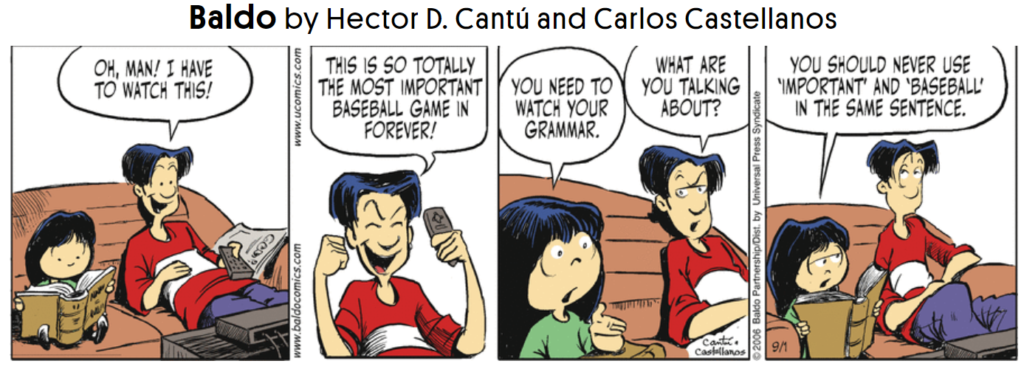Simile or Metaphor?
Neither, and he finally got it right. ( For the first sentence, I nearly wrote “he finally got it right in the end.” Do you know what’s wrong writing it that way? Answer at the end of the post.)
Last panel:

Yup, not a figure of speech at all.; it’s plain old text.
PS—Answer: Using both “finally” and “in the end” is needless repetition, a pleonasm.
Subscribe to this blog's RSS feed
She’s Correct, Though
Actually, sometimes you have to compromise because the space on a traffic sign is so limited.
Silent “t”
This isn’t much of a rule, but it brings back memories.

The punchline is the last item in the caption—pronouncing the “t” in “often.” I remember my teacher mentioning this in grade school. And my grandmother always pronounced that “t”! I never corrected her.
I have no idea where the rule came from, or where the “t” came from, for that matter. If you know, feel free to comment.
“In Forever”???
“Forever” is an adverb. Objects of prepositions need to be nouns, pronouns, or noun clauses, not adverbs.

So the humor is misdirection. You expect the gal in the third panel to correct the mistaken object of the preposition “in,” instead of express an opinion about baseball.
Another Example of Linguistic Change
In English we tend to combine oft-repeated phrases into single words. Here’s an example; second panel:
Mutt & Jeff by Bud Fisher

I think this dated back to the 1920s. It’s the first time I’ve seen “skin flint” instead of “skinflint.” I wonder if “cheapskate” was ever two words. I wouldn’t mind getting an ice cream cone for a quarter, though…
